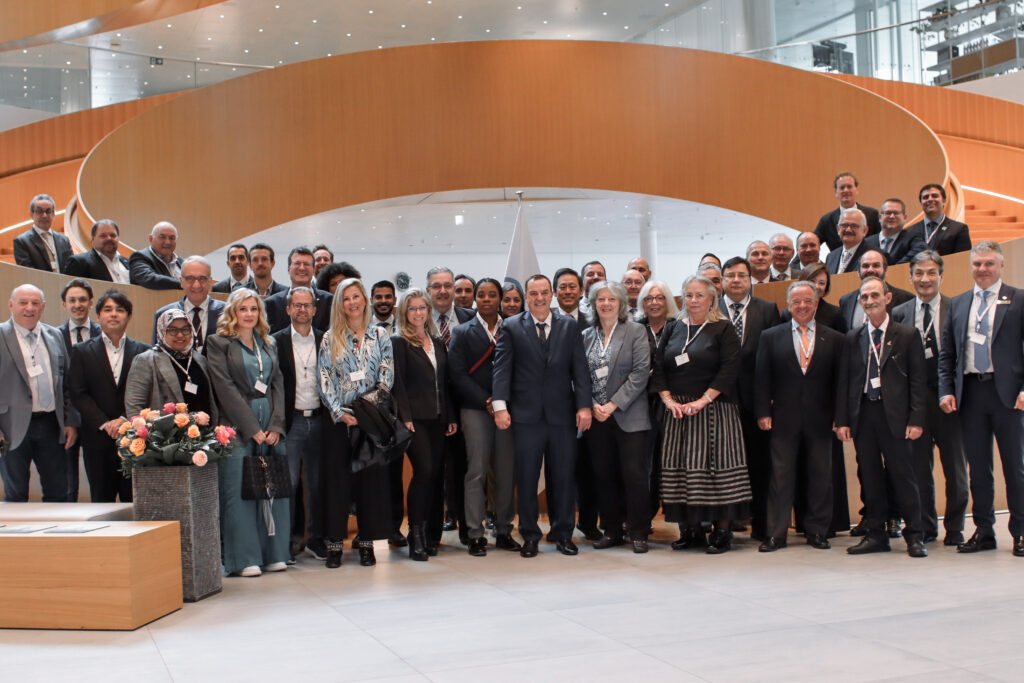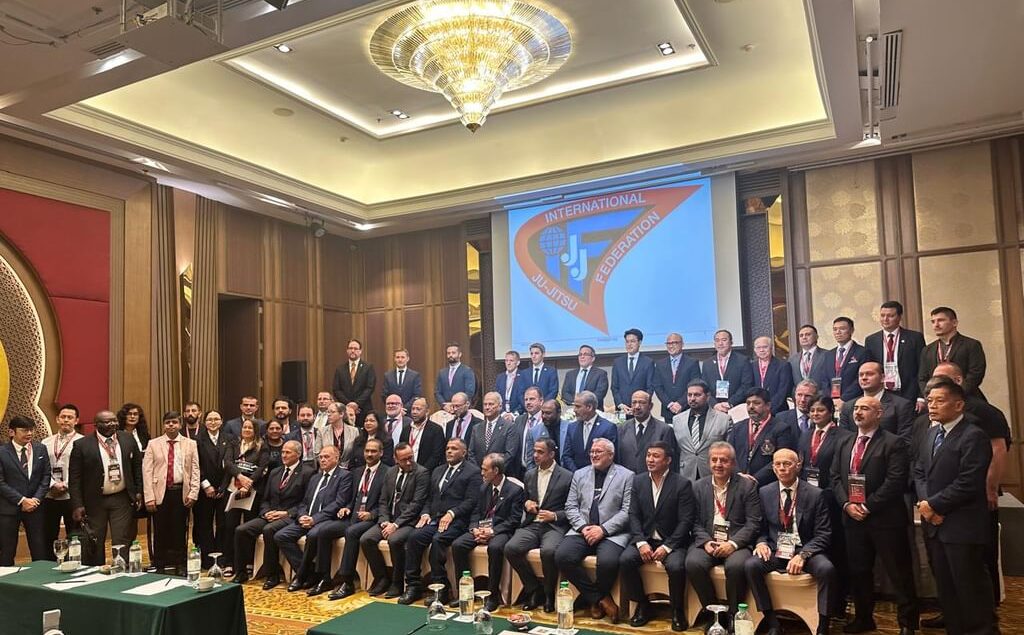Following the initiative of Pierre de Coubertin, who wanted to combine “muscles and mind” at the Games, seven editions, from 1912 to 1948, included Olympic events in painting, sculpture, literature, music and architecture. After these were dropped, the cultural programmes created for the Games successfully continued the vision of the man who revived the Games.
In an article entitled “the Roman Olympiad”, published on the front page of Le Figaro on 5 August 1904, 10 years after the revival of the Games, Pierre de Coubertin announced: “The time has come to enter a new phase, and to restore the Olympiads to their original beauty. At the time of Olympia’s splendour, and even later when Nero, the conqueror of Greece, made it his ambition to gather the ever-desired laurels along the banks of the Alphaeus, the arts and literature joined with sport to ensure the greatness of the Olympic Games. The same must be true in the future.”
The reason for the title of these two newspaper columns was the recent choice by the IOC members of the Italian capital as host of the Olympic Games in 1908. Thus, Coubertin continued, it is now “possible and desirable to unite in the future celebrations, as in those of antiquity, muscles and mind (…). Let the Romans now give us such a typical Olympiad and reopen the temple of sport to the ancient companions of its glory.” He concluded: “Perhaps, moreover, the artisans of pen and brush whom we shall invite will one day thank us for reopening to their anxious talents forgotten sources of nobleness and beauty.”
In May 1906, Coubertin organised in Paris a “consultative conference of the arts, literature and sport” at the Comédie-Française. He vigorously pursued his idea with the 60-or-so participants, who included 30 artists and five IOC members. In the January 1910 edition of the Revue olympique, we are told that “the conference unanimously approved the idea of establishing five contests, architecture, sculpture, painting, literature and music, which will hereafter be part of each Olympiad with the same status as the athletic tests. The sole condition is that the works presented should be inspired by the idea of sport or refer directly to sporting matters.”
PIERRE DE COUBERTIN, POETRY GOLD MEDALLIST UNDER DIFFERENT PSEUDONYMS
The 1908 Olympic Games were finally not held in Rome as planned but in London. The organisers of the Games of the IV Olympiad in the English capital thus had no time to stage an arts competition. And so it was in Stockholm in 1912 that this was first held, in line with the principles established in Paris six years earlier.
Because of the reticence of the Swedish organisers, Coubertin himself arranged these art contests in 1912– and decided to take part himself under two pseudonyms (Georges Hohrod and Martin Eschbach) in the poetry category. “Hohrod and Eschbach” submitted their “Ode to sport” and won the gold medal. And this was the only medal awarded in the “mixed literature” category, while all three podium places were filled in the others: “Olympic architecture”, “music”, “painting” and “sculpture”.
The art contests continued at the following Games, and were very popular in Paris in 1924, with 23 nations represented and 189 works submitted, and then in Amsterdam in 1928, with 1,150 works in architecture, painting and sculpture, and 62 musical compositions and literary works, with sub-categories in addition to the five main ones. What was more, these works were exhibited at the Stedelijk Museum in Amsterdam, and drew large crowds. The same was true in Los Angeles in 1932, with artists from 31 nations, more than 1,000 works submitted, fewer sub-categories and a hugely popular exhibition at the Los Angeles Museum.
Then came the 1948 Games in London, where several problems cast a shadow over the art competitions. There was a large number of sub-categories. In music, for example, there were “instrumental and chamber” and “vocal” sections, while in the painting and graphic arts category, there was a new “engravings” section, which made it hard for the jury members to pick out the higher quality works. The fact that the works were exhibited at the Victoria and Albert Museum, with high ticket prices, prevented many people from going to see them. And there were also professional artists, who could subsequently sell their works, in contradiction with the strict amateurism rule applied for the sports competitions. In short, the art competitions at the 1948 Games did not attract widespread interest, and the quality of the works submitted was not regarded as high.
ALL-ROUND CHAMPIONS
And so these artistic events were abandoned, and replaced by the “cultural programmes” that still exist today. But there are some interesting facts from those seven editions of the Games. In terms of the most medals, Switzerland’s Alex Walter Diggelmann won three (gold, silver and bronze) in painting, in 1936 and 1948. Danish writer Josef Petersen won three silver medals in literature, in 1924, 1932 and 1948.
Several of the competing artists also took part in the sports events, and two of them, America’s Walter Winans and Hungary’s Alfréd Hajós, achieved success in both the sports and the art competitions. Winans won gold in the double-shot running deer event in 1908 in London, and silver in the 100m team running deer single shot competition in 1912 in Stockholm, where he also won gold for his equestrian sculpture “An American Trotter”.
For his part, Hajós was a two-time Olympic swimming champion in Athens in 1896 (100m and 1,200m freestyle); and he then took part in the architecture competition in Paris in 1924, where he won a silver medal with compatriot Dezső Lauber for a stadium design.
In addition, Avery Brundage, IOC President from 1952 to 1972, took part in the pentathlon and the decathlon in Stockholm in 1912 before receiving an “honourable mention” in literature for his work entitled “The Significance of Amateur Sport” in 1932 in Los Angeles. Lastly, Britain’s John Copley won a silver medal for his engraving in 1948 in London at the age of 73, making him the oldest medallist in Olympic history.
THE CULTURAL PROGRAMMES – A KEY PART OF THE OLYMPIC GAMES
After the Games in London, numerous discussions led to the art competitions being dropped from the Games; but in 1954, the IOC decided that each organising committee should create an art and culture programme, and this started with a fine arts exhibition at the 1956 Games in Melbourne. Since then, the cultural programmes have become a key part of the Olympic celebrations, which is today reflected in section 10 of the Host City Contract signed between the IOC and each city organising the Games: “Adding to the festive atmosphere of the Games, Olympic Games Culture includes projects and events that showcase local, national and international culture, foster cross-cultural dialogue, and celebrate the Olympic values to engage the broadest possible audience.
“This is accomplished through the cultural programme, which is an opportunity to engage a wide cross-section of the Host Country’s population and visitors from around the world in the spirit of the Games and Olympism — including young people and those with diverse interests beyond sport. The cultural programme enables the development of long-term cultural projects with significant legacy value. This programme shall culminate with a cultural festival, which shall operate for at least the entire period during which the Olympic Villages are open.”
Recommendation 26 of the IOC’s Olympic Agenda 2020 IOC was to “further strengthen the blending of sport and culture at the Olympic Games and in-between”, and among other things “develop an artists-in-residence programme” during the Games. As a result, at the 2016 Games in Rio, for the first time, contemporary artist JR, writer Tilman Spengler and digital artist Gerald Andal were in residence during the Games. JR created giant scaffolding-supported images of athletes in action, visible from all sides at Flamengo, Barra de Tijuca and Botafogo. He also organised the “Inside Out” project, getting the various people taking part in the Games, but also spectators and local inhabitants, to pose against a polka dot background. Thousands of faces. The experiment was continued at The Olympic Museum in Lausanne.
And in PyeongChang in 2018, the innovative “Olympic Art Project” brought together four Olympians who are also artists, to create a series of short videos and lead painting workshops in the Olympic Village.
And in Buenos Aires, to mark the Olympism in Action Forum and the Youth Olympic Games 2018, the IOC commissioned Argentine conceptual artist Leandro Erlich to create Ball Game, a large-scale installation and performance that invited a diverse audience onsite and online to participate in a shared experience inspired by the Olympic values, and to come together through art in the Olympic spirit of friendship and respect.
Pierre de Coubertin’s vision of having “the arts and literature joined with sport to ensure the greatness of the Olympic Games” is more relevant today than ever, and new cultural initiatives are set to take place in the upcoming editions of the Games.











